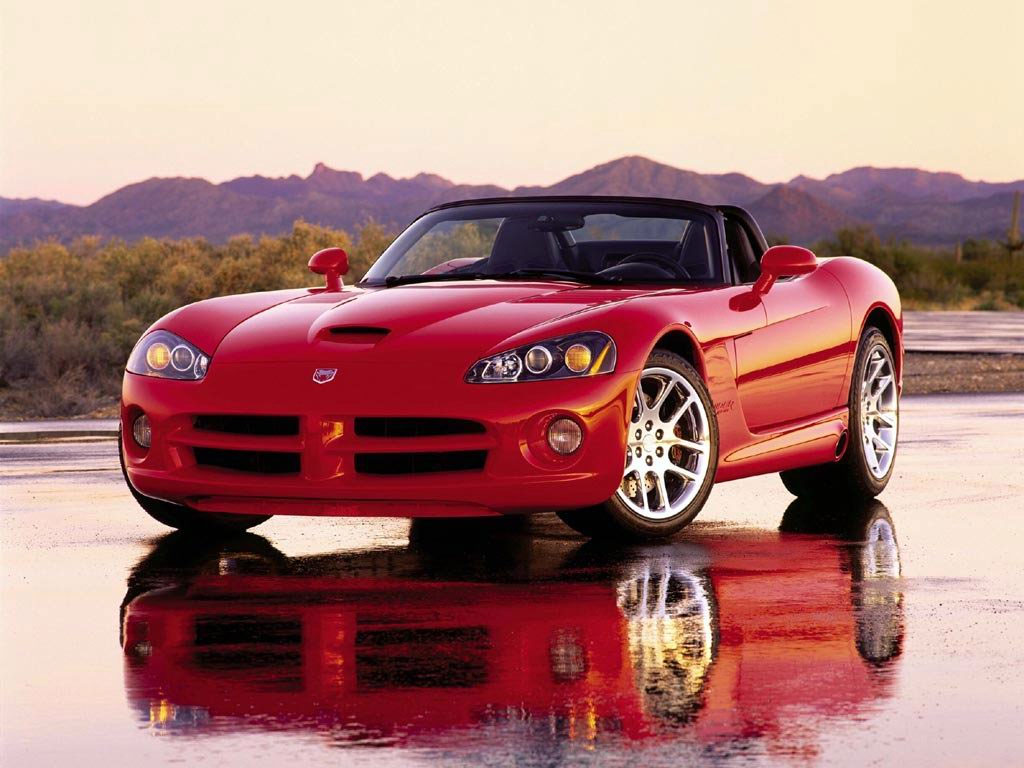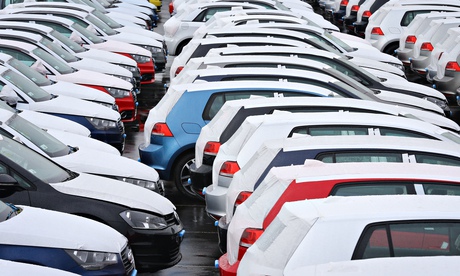Ready for some more automotive information? We have a great short article today that you should really review. Stay up to this day with all car related information and car transport information here.

Forget the cheerleading from the White House. Nevermind the latest job numbers. Look at your wallets. Despite the persistent happy talk about a recovery, and the hundreds of charts that come along with it, the US economy is not getting better â€" it may actually be getting worse.
There are millions of Americans who hoped 2014 would be the year their financial lives would improve. After the struggle of a stagnant country since 2009, economic forecasts predicted that a real recovery was coming - that this this would be the year for a well-paying new job, a house, the year those Americans would pay off student loans or reduce their credit-card debt.
But nothing can really improve for us individually until everything improves for all of us economically. And, increasingly, that utopia looks distant. According to the numbers â€" and to an increasingly frustrated group of experts â€" the first few months of 2014 are turning out to be a bust, and there’s no reason to believe the rest of the year will be any better, for the haves or the have-nots.
First, there are the basics. This year has started with bad news for consumers: a weaker housing market, anemic employment with 10m people out of work and millions of others not even looking any more, plus economic growth that’s lower than it’s been in three years.
Guy LeBas, a managing director at Janney Capital Markets who called the GDP figures “an absolute tape bomb,†pointed out: “2014, what was supposed to be the ‘break-out’ year according to many optimistic forecasts, would be starting off with the weakest performance of any quarter since 2011.â€
There are other, wonkier measures that fill out the picture: productivity, a measure of the robustness of the American workforce, dropped to 3.2% in April - the sharpest tumble since 2008. Personal spending is falling, into negative territory, because healthcare and high gas bills were the main things Americans were buying this winter, and they aren’t now.
To millions of Americans, this downward trend is no surprise, even if the numbers are new. The relentless cheerleading about the improving economy never really made sense for a large swath of Americans: those who were forced to take lower-paying jobs, had their houses foreclosed by banks, or were drummed out of the workforce into long-term unemployment.
What’s different this time is that the misery is starting to spread higher up.
The paradox of the “recovery†for the past five years has been that consumers suffered while corporations and Wall Street raked in profits unseen in their history. At the end of 2013, corporate profits hit an all-time high of $1.9tn. Those profits were largely achieved not by growing, but by cutting - cutting jobs, investment in research, and new projects. Banks benefitted, too, with their profits of the six largest US banks reaching $76bn last year - not so far from the record of $82bn in 2006. That was also based on cutting - mainly, on cutting out consumers from mortgages and other lending.
The corporate balloon is popping: trade deficits jumped to a two-year high, and once-bulletproof companies and banks are suffering as corporate profit margins fell 14% in the first three months of the year â€" at the expense of American workers, of course, with Goldman Sachs dispassionately declaring that “wage growth has shown little evidence of a pick-upâ€.
The negative economic data recently has been waved off by any number of economists, who dismissed the GDP drop into negative territory, for instance, as an anomaly. It’s the same way many economists have waved off America’s persistent unemployment crisis. The promise was that the economy was storing up all its energy, that consumers were temporarily holding back until they would be released - by weather, by credit, by sheer impulse - to go on economy-boosting spending sprees throughout the country.
For anyone paying attention, hearing these chipper decisions to ignore the data was like falling through the looking glass.
Lindsey Piegza, chief economist of Sterne Agee, was paying attention. Her prediction for GDP growth in the second half of the year is about 1.7% â€" less than half of what many others are predicting.
“The momentum that I found most economists pointing to, I wasn’t seeing that,†she told me. “A lot of economists were expecting this rebound in demand in the consumer sector, but it’s not as if consumers were at home twiddling their thumbs waiting to spend money.â€
In her discussions with businesses, too, she gets the impression that “they’re trying to keep their heads above water. … I’m not seeing where the momentum is coming from.â€
That will trickle down to workers and consumers. Guy Lebas, a managing director with Janney Capital Markets, says as long as companies are “finding it more productive to buy back shares than build new factories, productivity will remain at best stagnant.â€
No wonder consumers â€" those engines of economic growth â€" don’t have much money. Income growth is at its lowest point since 2007. When people are shopping, they’re using borrowed money - “some of it credit, 401ks, investment portfoliosâ€, Piegza says.
A good example: the boom in auto sales. GM, Ford and Chrysler have been selling cars at a rapid clip, despite the recall scandals. The reason? Auto loans are cheap and readily available, and the lenders aren’t too picky. The average auto loan is now about $28,000 a car, and one-quarter of new loans are being paid out over as much as seven to nine years. Lenders are also giving auto loans to people with bad credit - subprime consumers. Auto sales are booming purely on the back of the American willingness to go into unimaginable levels of debt with very little collateral.
For things that aren’t cars - houses, and clothes, and gadgets - Piegza says, “we have nowhere to go but waning consumption levels.â€
Translation: expect people to squeeze their wallets shut, and hard.
To find out why, look to employment and housing, those two stalwarts of financial security for most people.
The job market is not yet secure. The real unemployment rate - not the one in headlines (6.3% in May, the US Department of Labor announced Friday morning), but the one that counts a fuller number of the unemployed as well - is around 12%. Companies are hiring, but it’s “temporary flexible labor,†and even though the economy is adding jobs, many of them are low-quality and low-paying.
Housing is also becoming weak, after false claims last year that a recovery was on the way.
The problem is simple: housing is too expensive for most people to afford, especially because mortgages are scarce. To paraphrase a New York political candidate, the mortgage is too damn high. Or, as Ian Shepherdson of Pantheon Macroeconomics puts it:
The end of the severe winter weather will not bring with it a sustained revival in the housing market. The real problem is last year's massive deterioration in affordability, the worst for 32 years. Housing is not going to drive the economy forward for the foreseeable future, and could easily be a net drag for some time yet.
This is not a permanent situation. The economy changes - monthly, weekly, and daily. It is volatile. It can turn around, but it would require something to create a giant shot of economic growth - a massive investment in infrastructure, for instance, or a sudden demand for US products. If US consumers aren’t buying, maybe Chinese consumers will get excited about spending again.
There’s no evidence that anything like that is in the works - and with an election coming in November, vast swaths of Washington lawmakers are happier to believe magical thinking that says the recovery is already here. Talk won’t fix the problem.
For the rest of us, there’s not much to do but be more careful with our money, work a little harder to keep our jobs, and not make any plans for big spending. It won’t improve the economy. But it will mean we won’t be surprised or particularly vulnerable if the bad times keep going just a little bit longer.
http://www.theguardian.com/commentisfree/2014/jun/06/recovery-2014-economy-wall-street-washington-hype



 Osamu Suzuki's term as head of the carmaker has been extended a further year.
Osamu Suzuki's term as head of the carmaker has been extended a further year.






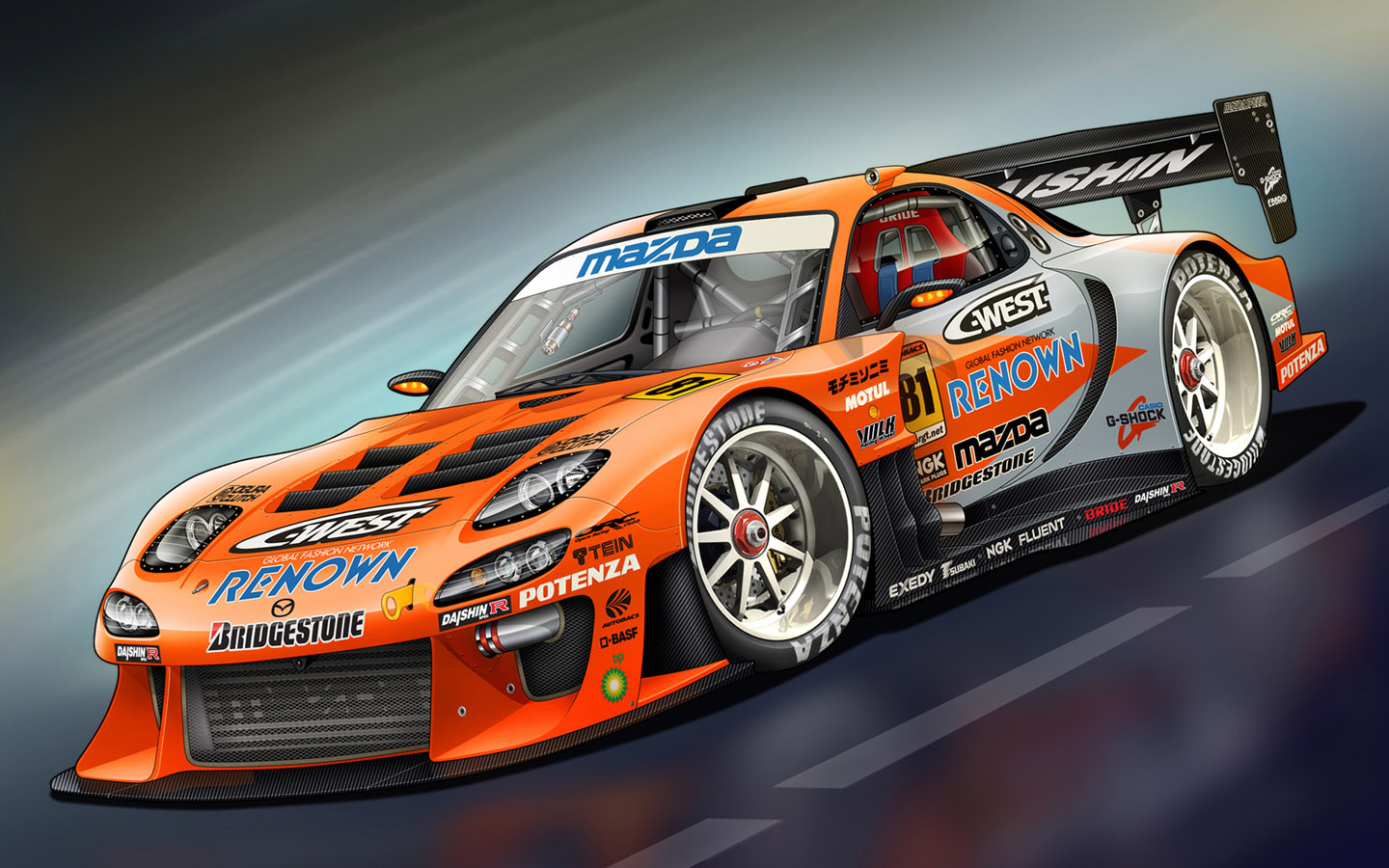


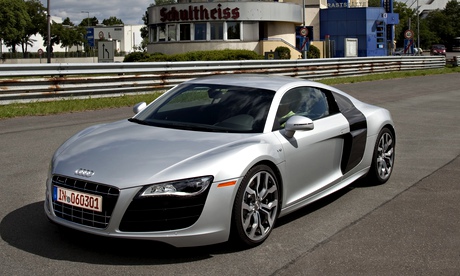


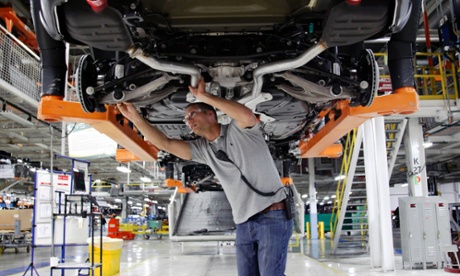 A chassis assembly line supervisor on the assembly line at the Chrysler Jefferson North Assembly plant in Detroit. Photograph: Paul Sancya/AP
A chassis assembly line supervisor on the assembly line at the Chrysler Jefferson North Assembly plant in Detroit. Photograph: Paul Sancya/AP













